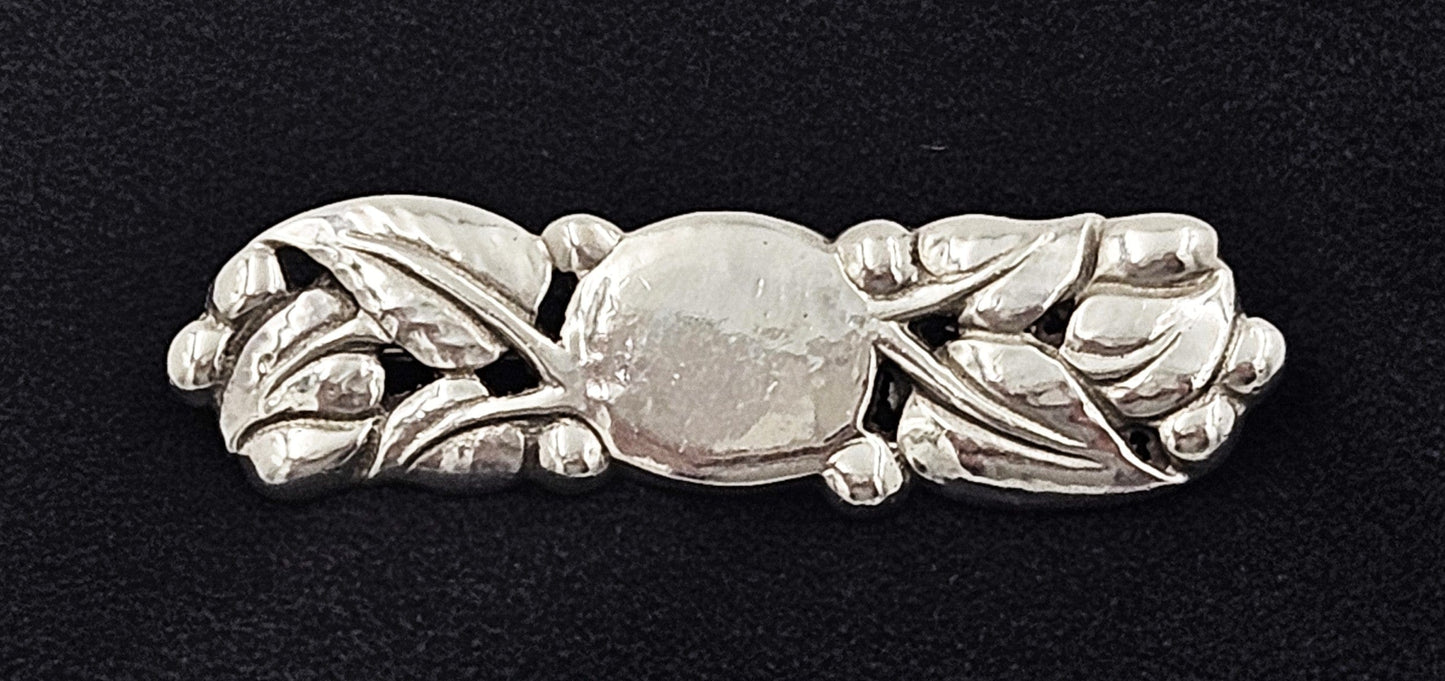Randahl
Swedish Julius Olaf Randahl JOR Kalo Sterling Silver Brooch #66 Circa 1940's
Swedish Julius Olaf Randahl JOR Kalo Sterling Silver Brooch #66 Circa 1940's
Couldn't load pickup availability
Swedish Designer Julius Olaf Randahl JOR Kalo Shops Sterling Silver Brooch #66 Circa 1940's
Measurements: 2.2"L x .6"W (5.59cm x 1.52cm)
Markings: Randahl Sterling 66
Weight: 9.2g
Phenomenal brooch inspired by Georg Jensen made by Swedish born designer Randahl. It is in excellent condition, having been professionally polish and looks phenomenal.
Mannequin is a life-size torso representation
Julius Olaf Randahl (1880 – 1972) was a Swedish silversmith. He worked in both New York and Chicago. Randahl is best known for his exquisite silver pieces, which were often inspired by nature. His work can be found in several museums and private collections around the world.
Biography
In 1901, he moved to New York and worked for Tiffany and Gorham Manufacturing. In 1907, he worked at the Kalo Shop in Chicago before opening his Randahl Shop in Park Ridge, Illinois, in 1911. While the Kalo Shop produced the largest amount of Arts & Crafts silver, two other makers had fairly sizable outputs -- Lebolt and Randahl. Julius O. Randahl was a Swedish silversmith who worked at the Kalo Shop from 1907 to 1910, important Park Ridge years when Kalo was growing quickly and creating some of its best work. After leaving, Randahl and another ex-Kalo silversmith, Matthias Hanck, formed a shop called the Julmat (from the first syllables from each of their names), which lasted just one year. After this short-lived store closed, Hanck opened a small shop in Park Ridge specializing in jewelry (see below). Randahl founded the Randahl Shop, probably inspired by the Kalo model, with one important difference -- Randahl sold his holloware through department stores and jewelry shops rather than just from his storefront.
The Shop closed during the first World War, and when Randahl re-opened it he introduced mechanization. While some work was still done the old way, it was no longer a pure handwrought operation like Kalo. Randahl arranged for national distribution, and soon had 15 - 20 workers producing his holloware. The Shop did well enough to weather the Depression years (although Randahl had to mortgage his home) and prospered into the 1950's, when Randahl, now in business with his sons as the Randahl Company, purchased Cellini Craft, an Evanston, IL silversmith dating back to 1914. Finally, in 1965, the business was sold to Reed & Barton.
The early pieces carry the original mark -- Randahl's initials JOR with a stylized hammer running horizontally through the letters, and the words HAND WROUGHT. In the 1930s this was changed to RANDAHL HANDWROUGHT, and finally just RANDAHL.
Materials
Materials
Shipping & Returns
Shipping & Returns
Dimensions
Dimensions
Care Instructions
Care Instructions
Share


Image with text
Pair text with an image to focus on your chosen product, collection, or blog post. Add details on availability, style, or even provide a review.
-
Free Shipping
Pair text with an image to focus on your chosen product, collection, or blog post. Add details on availability, style, or even provide a review.
-
Hassle-Free Exchanges
Pair text with an image to focus on your chosen product, collection, or blog post. Add details on availability, style, or even provide a review.


